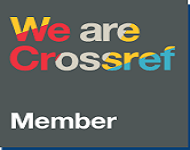Strategi Marketing dalam Optimalisasi Minat Pengunjung Website caribakatmu.com dengan Pendekatan Technology Acceptance Model
DOI:
https://doi.org/10.33394/jpu.v4i1.7014Keywords:
Marketing Strategy, caribakatmu.com, Technology Acceptance Model.Abstract
This service aims to contribute as a marketing strategy and increase visitors to the caribakatmu.com website, which was managed by PT Ahad Edutama Inovasi with the technology acceptance model (TAM) approach. This service method was Participatory Action Research (PAR), where the service team assisted partners in research to solve problems. Data was collected by distributing questionnaires to 100 website user respondents in which the questions were based on the approach used. Path analysis was used in this activity with the SEM-PLS program to comprehensively determine the direct and indirect effects of exogenous variables on endogenous ones. This service analysis showed that Caribakatmu.com was following the technology acceptance model. The variables perceived ease of use and perceived usefulness significantly affect attitude towards using and behavioral intention. However, with the addition of age and gender control variables, there are several suggestions for Caribakatmu.com, including 1) the Development of services for the student level up to the company level; 2) Expanding personality testing by providing visual tests, memory games and creativity so that talent mapping is comprehensive; 3) Adding the share feature so that users can promote this website.
References
Alomary, A., & Woollard, J. (2015, 21st November 2015). How is Technology Accepted by Users? A Review of Technology Acceptance Models and Theories. The IRES - 17th International Conference, London, United Kingdom.
Angelina, P. J. J., & Japarianto, E. (2014). Analisis Pengaruh Sikap, Subjective Norm dan Perceived Behavioral Control Terhadap Purchase Intention Pelanggan SOGO Department Store di Tunjungan Plaza Surabaya. Jurnal Strategi Pemasaran, 2(1), 1–7.
Baziad, M. (2015). Digital economy Indonesia aims to beat Malaysia in internet. Retrieved from https://www.digitalnewsasia.com/digital-economy/indonesia-aims-to-beatmalaysiaininternet.
Darmanto, A., Pradiani, T., & Ruspitasari, W. D. (2020). Pengaruh Kualitas Website Dan Promosi Penjualan Terhadap Minat Beli Di Bukalapak.Com. 20–33.
Davis, F. D. (1985). A technology acceptance model for empirically testing new end-user information systems: theory and results. (Ph.D in Management Disertation), Massachusetts Institute of Technology, Sloan School of Management.
Davis, F. D. (1989). Perceived usefulness, perceived ease of use, and user acceptance of information Technology. MIS Quarterly, 13(3), 319-340. doi: https//doi.org/10.2307/249008.
Ghozali, I., & Latan, H. (2012). Partial Least Square: Konsep, Teknik dan Aplikasi Smart PLS 2.0 M3. Semarang; Badan Penerbit Universitas Diponegoro.
Hair, J. F., Ringle, C. M., Sarstedt, M., Hair, J. F., Ringle, C. M., & Sarstedt, M. (2014). PLS-SEM : Indeed a Silver Bullet PLS-SEM : Indeed a Silver Bullet. January 2015, 37–41. https://doi.org/10.2753/MTP1069-6679190202
Hendrawan, E., Irianto, S. Y., & Fitria. (2021). Measurement Of Electronic Learning Performance Using The Technology Acceptance Model (TAM) Method At The Vocational School Of Patria Gadingrejo. Jurnal TAM (Technology Acceptance Model), 12(1), 48–58.
Heryanta, J. (2019). Pengaruh Behavioral Intention Terhadap Actual Use Pengguna GOJEK Indonesia dengan Pendekatan Technology Acceptance Model dan Innovation Diffusion Theory. Jurnal Ilmiah Mahasiswa FEB Universitas Brawijaya, 7(2).
Hickernell, F. S. (1985). Zinc Oxide Films for Acousto electric Device Applications. IEEE Transactions on Sonics and Ultrasonics, 32(5), 621–629. https://doi.org/10.1109/T-SU.1985.31645.
Indrayana, B., Seminar, K. B., & Sartono, B. (2016). Faktor Penentu Minat Penggunaan Instagram Untuk Pembelian Online Menggunakan Technology Acceptance Model ( TAM ) dan Theory of Planned Behavior ( TPB ). Jurnal Aplikasi Bisnis Dan Manajemen, 2(2), 138–147. https://doi.org/10.17358/JABM.2.2.138
Jogiyanto, H. M. (2008). Metodologi penelitian sistem informasi.Yogyakarta: Penerbit Andi.
Lestari, P., & Nugraha, J. (2021). Analysis Of Using Quizizz To The Students Of Grade Xii Smk N 1 Surabaya Using The Technology Acceptance Model. Jurnal TAM (Technology Acceptance Model), 12(2), 123–134.
Mardhiyah, N. S., Rusydi, M., & Azwari, P. C. (2020). Analisis Technology Acceptance Model (TAM) Terhadap Penggunaan Aplikasi Gojek Pada Mahasiswa Kota Palembang. Esensi: Jurnal Bisnis Dan Manajemen, 10(2), 173–180.
Rokhmawati, I. A., & Nugraha, J. (2021). Analysis Of The Use Of The Typing Master Application In Students Of Office Administration Education At The State University Of Surabaya Using TAM. Jurnal TAM (Technology Acceptance Model), 12(2), 90–102.
Sánchez-Prieto, J. C., Olmos-Migueláñez, S., & GarcÃa-Peñalvo, F. J. (2017). MLearning and pre-service teachers: an assessment of the behavioral intention using an expanded TAM model. Computers in Human Behavior, 72, 644-654. doi: https://doi.org/10.1016/j.chb.2016.09.061.
Saputri, M., Prastyo, T. D., & Mukodi. (2018). Implementasi Theme Dengan Seo Dalam Website Agoeshendriyanto.Com. Repository Stkippacitan, 1–12.
Zahro, D. A., & Nugraha, J. (2021). Analysis Of The Use Of Mendeley Using The Technology Acceptance Model ( Tam ) Approach : Study In Students Of Office Administration Education In Surabaya State. 12(1), 33–40.
Downloads
Additional Files
Published
How to Cite
Issue
Section
Citation Check
License
Authors who publish with this journal agree to the following terms:
- Authors retain copyright and grant the journal right of first publication with the work simultaneously licensed under a Creative Commons Attribution License (CC BY-SA 4.0) that allows others to share the work with an acknowledgment of the work's authorship and initial publication in this journal.
- Authors are able to enter into separate, additional contractual arrangements for the non-exclusive distribution of the journal's published version of the work (e.g., post it to an institutional repository or publish it in a book), with an acknowledgment of its initial publication in this journal.
- Authors are permitted and encouraged to post their work online (e.g., in institutional repositories or on their website) prior to and during the submission process, as it can lead to productive exchanges, as well as earlier and greater citation of published work (See The Effect of Open Access).





